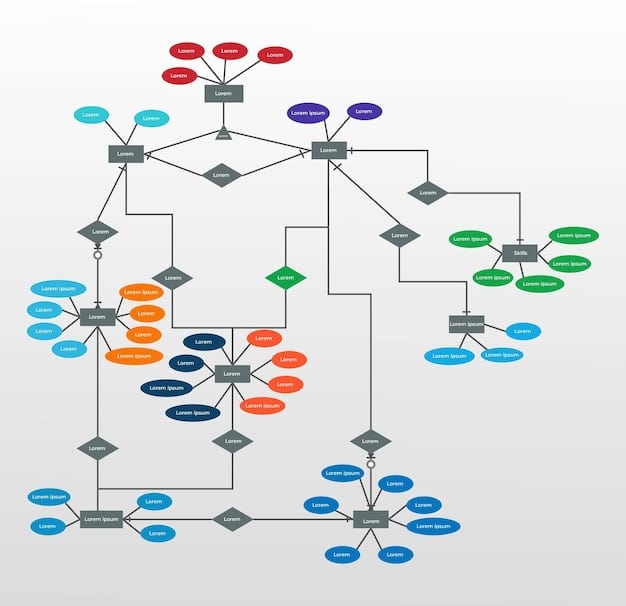Machine Learning for Sentiment Analysis: Achieve 90% Accuracy

Machine learning techniques enable accurate sentiment analysis in natural language processing, with models reaching 90% accuracy by leveraging advanced algorithms and extensive datasets for nuanced understanding of text.
Unlock the power of machine learning for natural language processing: sentiment analysis with 90% accuracy. Dive into how algorithms and datasets are revolutionizing the way we understand and interpret human emotions from text.
Understanding Sentiment Analysis
Sentiment analysis, also known as opinion mining, is a subfield of natural language processing (NLP) that focuses on determining the emotional tone behind a piece of text. It’s the process of identifying and categorizing opinions expressed in text, especially to determine whether the writer’s attitude towards a particular topic, product, or service is positive, negative, or neutral.
Effective sentiment analysis can provide invaluable insights for businesses, researchers, and anyone looking to understand the underlying opinions and emotions driving online conversations and textual data.
Applications of Sentiment Analysis
Sentiment analysis has numerous real-world applications across diverse industries. From gauging customer satisfaction to monitoring brand reputation, the insights gleaned from sentiment analysis can inform critical decision-making processes.
- Customer Feedback Analysis: Understanding customer opinions from reviews, surveys, and social media posts to improve products and services.
- Brand Monitoring: Tracking brand sentiment across various online platforms to identify potential reputation issues and manage public perception.
- Market Research: Identifying trends and sentiments related to specific products, services, or industries to guide marketing strategies.
- Political Analysis: Gauging public opinion on political candidates, policies, and events to inform campaign strategies and policy decisions.
By leveraging machine learning, sentiment analysis can achieve a high degree of accuracy in identifying the true sentiment behind text, making it an indispensable tool for businesses and researchers alike.

The Role of Machine Learning
Machine learning plays a pivotal role in enhancing the accuracy and efficiency of sentiment analysis. By training models on vast amounts of textual data, algorithms can learn to identify patterns, nuances, and context that are essential for accurate sentiment classification.
Traditional rule-based approaches often struggle to handle the complexities of human language, but machine learning algorithms excel at capturing subtleties and adapting to various linguistic styles.
Key Machine Learning Techniques
Several machine learning techniques are commonly used for sentiment analysis, each with its strengths and limitations. Understanding these techniques is crucial for selecting the most appropriate model for a given task.
- Naive Bayes: A probabilistic classifier based on Bayes’ theorem, suitable for simple sentiment classification tasks.
- Support Vector Machines (SVM): A powerful classifier that can handle high-dimensional data and complex decision boundaries.
- Recurrent Neural Networks (RNNs): A type of neural network designed for processing sequential data, making them ideal for capturing the context and dependencies in text.
- Transformers: Advanced neural networks that use self-attention mechanisms to weigh the importance of different words in a sentence, leading to state-of-the-art performance in sentiment analysis.
These algorithms offer various approaches to understanding and categorizing sentiment, each capable of achieving high accuracy rates when properly trained and optimized.
Achieving 90% Accuracy: The Path to Success
While different machine learning models can be used for sentiment analysis, achieving 90% accuracy requires a strategic approach that encompasses data preprocessing, feature engineering, model selection, and hyperparameter tuning.
It’s about refining each step of the process to ensure that the model is capable of understanding the nuances of language.

Data Preprocessing Techniques
Data preprocessing is a critical step in achieving high accuracy in sentiment analysis. Cleaning and preparing the data ensures that the model can learn from relevant information and avoid being misled by noise or irrelevant features.
Effective preprocessing can significantly improve the performance of machine learning models.
- Tokenization: Breaking the text into individual words or tokens to analyze the sentiment.
- Stop Word Removal: Eliminating common words (e.g., “the,” “a,” “is”) that don’t contribute significantly to sentiment analysis.
- Stemming and Lemmatization: Reducing words to their root form to improve consistency and reduce dimensionality.
- Handling Negation: Properly identifying and handling negation words (e.g., “not,” “never”) to avoid misclassifying sentiment.
Proper preprocessing ensures the model focuses on the most vital aspects of the text, enhancing its ability to discern accurate sentiment.
Feature Engineering for Sentiment Analysis
Feature engineering involves selecting and transforming relevant features from the preprocessed text to enhance the model’s ability to understand and classify sentiment. The right features can significantly improve sentiment analysis accuracy.
It’s about choosing the right signals from the data for the model to learn from.
Feature Extraction Methods
Several feature extraction methods can be used to transform text into numerical features that can be fed into machine learning models. These include:
- Bag of Words (BoW): Representing text as a collection of individual words and their frequencies.
- TF-IDF (Term Frequency-Inverse Document Frequency): Weighting words based on their importance in a document and across the entire corpus.
- Word Embeddings: Mapping words to high-dimensional vectors that capture semantic relationships between words.
By choosing the appropriate feature extraction method, you can provide the model with the most relevant information to accurately classify sentiment.
Model Training and Evaluation
The effectiveness of a sentiment analysis model hinges on rigorous training and evaluation. Proper training ensures the model learns to correctly classify sentiment, while evaluation methods assess its performance and identify areas for improvement.
Training and evaluation are essential for optimizing a sentiment analysis model.
Evaluation Metrics
Several metrics are used to evaluate the performance of sentiment analysis models:
- Accuracy: The ratio of correctly classified instances to the total number of instances.
- Precision: The ratio of true positive instances to the total number of instances predicted as positive.
- Recall: The ratio of true positive instances to the total number of actual positive instances.
- F1-Score: The harmonic mean of precision and recall, providing a balanced measure of performance.
Hyperparameter Tuning
Hyperparameter tuning involves optimizing the model’s architecture and training parameters to achieve the best possible performance. Techniques such as grid search and random search can be used to find the optimal hyperparameter values.
By carefully selecting evaluation metrics and tuning hyperparameters, you can fine-tune your sentiment analysis model to achieve the desired level of accuracy.
Addressing Challenges in Sentiment Analysis
Sentiment analysis is not without its challenges. Factors like sarcasm, irony, and context can complicate the accurate interpretation of sentiment. Models must be designed to account for these complexities to deliver reliable results.
Overcoming these challenges is essential for robust sentiment analysis.
Handling Sarcasm and Irony
Sarcasm and irony can be particularly challenging for sentiment analysis models, as they often express the opposite of what is literally stated. Techniques such as incorporating contextual information, using sarcasm detection algorithms, and leveraging external knowledge sources can help address this issue.
Dealing with Contextual Information
Contextual information is crucial for accurately interpreting sentiment. Models that consider the surrounding text, the author’s background, and the broader context of the conversation are better equipped to understand the true sentiment behind a piece of writing.
| Key Point | Brief Description |
|---|---|
| 📊 Machine Learning Basics | Machine learning enhances sentiment analysis through pattern recognition and adaptation. |
| 🛠️ Data Preprocessing | Tokenization and stop word removal improve data quality for analysis. |
| 🎯 Feature Engineering | Methods like TF-IDF extract relevant features for accurate sentiment classification. |
| 📈 Model Evaluation | Metrics such as accuracy and F1-score assess model performance, guiding improvements. |
Frequently Asked Questions
▼
Sentiment analysis, also known as opinion mining, is a field within natural language processing that identifies and determines the emotional tone behind a body of text.
▼
Machine learning algorithms enhance sentiment analysis by enabling models to learn patterns and context from large datasets, leading to more accurate classifications.
▼
Important preprocessing steps include tokenization, stop word removal, and stemming or lemmatization, which clean and prepare the data for analysis.
▼
Challenges include handling sarcasm, irony, and contextual information, requiring advanced techniques to accurately interpret the intended sentiment.
▼
Common metrics include accuracy, precision, recall, and F1-score, which provide a comprehensive view of the model’s performance.
Conclusion
The journey to achieving a 90% accuracy in machine learning for natural language processing: sentiment analysis is complex but achievable. By understanding the fundamentals of sentiment analysis, leveraging machine learning techniques, and addressing the challenges inherent in language, businesses and researchers can unlock the full potential of sentiment analysis to gain valuable insights from textual data.





